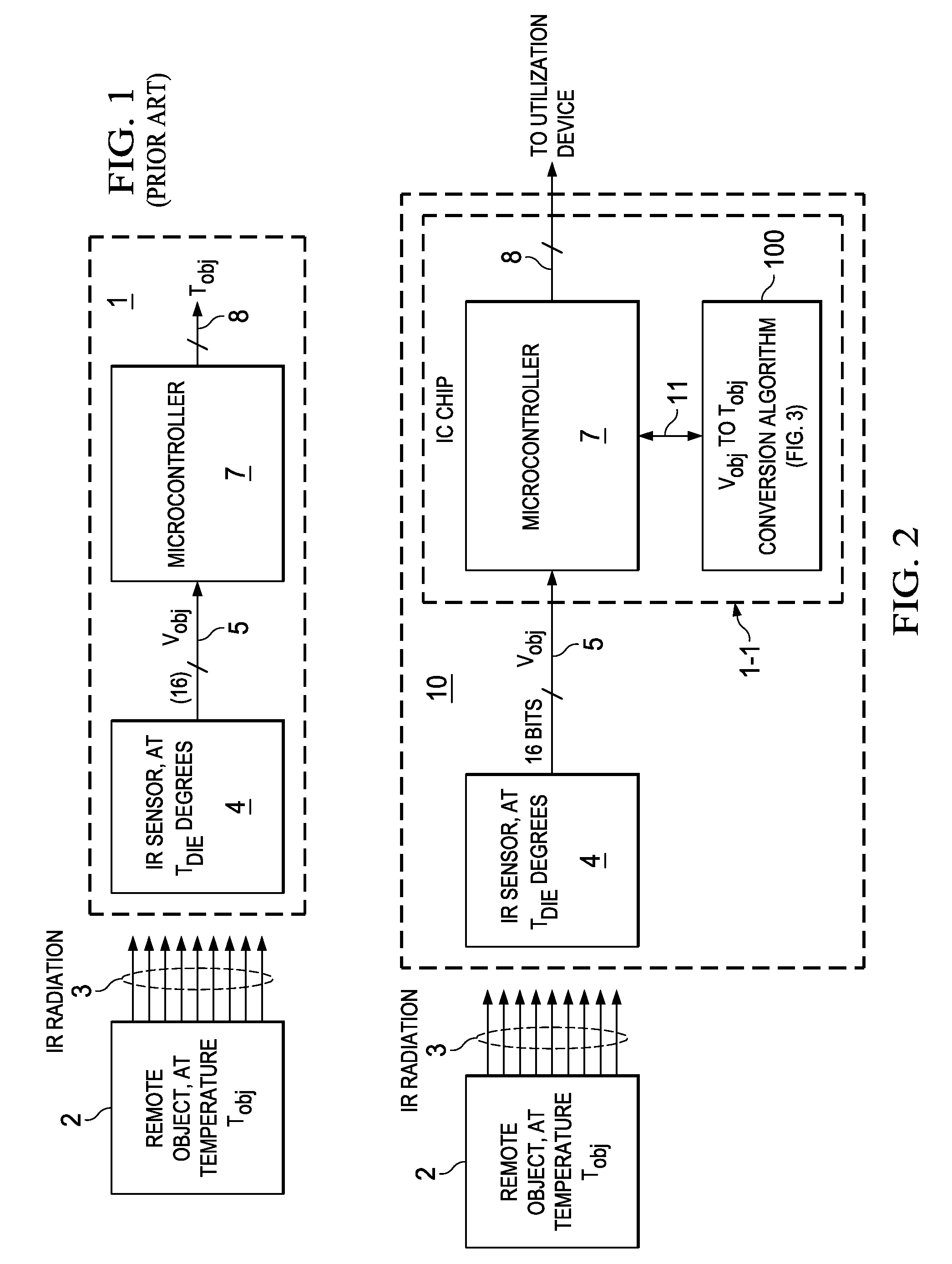Modified fixed-point algorithm for implementing infrared sensor radiation equation
a technology of infrared sensor and radiation equation, which is applied in the field of infrared sensors, can solve the problems of large additional chip area, and large amount of programming code, and achieve the effect of low cost ir-to-object, adequate accuracy, and fast and accurate measurement of object temperatur
- Summary
- Abstract
- Description
- Claims
- Application Information
AI Technical Summary
Benefits of technology
Problems solved by technology
Method used
Image
Examples
Embodiment Construction
[0036]A contactless infrared (IR) sensor integrated circuit includes an IR sensor and a microcontroller which operates to convert a voltage that represents impinging IR radiation power to a digital word or number that represents the temperature of a remote object emitting the IR radiation. (The term “remote object” as used herein simply means that the IR sensor does not physically contact the surface of the object emitting the IR radiation.) The microcontroller executes a “virtual resolution” IR conversion algorithm that is executed by means of hard-wired integrated circuit logic circuitry, such as logic circuitry in a microcontroller, which precisely corresponds to the conversion algorithm and maintains “virtual resolution” of digital values expressed in scientific notation (integer value multiplied by a base number raised to an exponential power) without additional circuitry or software for keeping track of the exponents. The implementation of the conversion algorithm is optimized...
PUM
 Login to View More
Login to View More Abstract
Description
Claims
Application Information
 Login to View More
Login to View More - R&D
- Intellectual Property
- Life Sciences
- Materials
- Tech Scout
- Unparalleled Data Quality
- Higher Quality Content
- 60% Fewer Hallucinations
Browse by: Latest US Patents, China's latest patents, Technical Efficacy Thesaurus, Application Domain, Technology Topic, Popular Technical Reports.
© 2025 PatSnap. All rights reserved.Legal|Privacy policy|Modern Slavery Act Transparency Statement|Sitemap|About US| Contact US: help@patsnap.com



